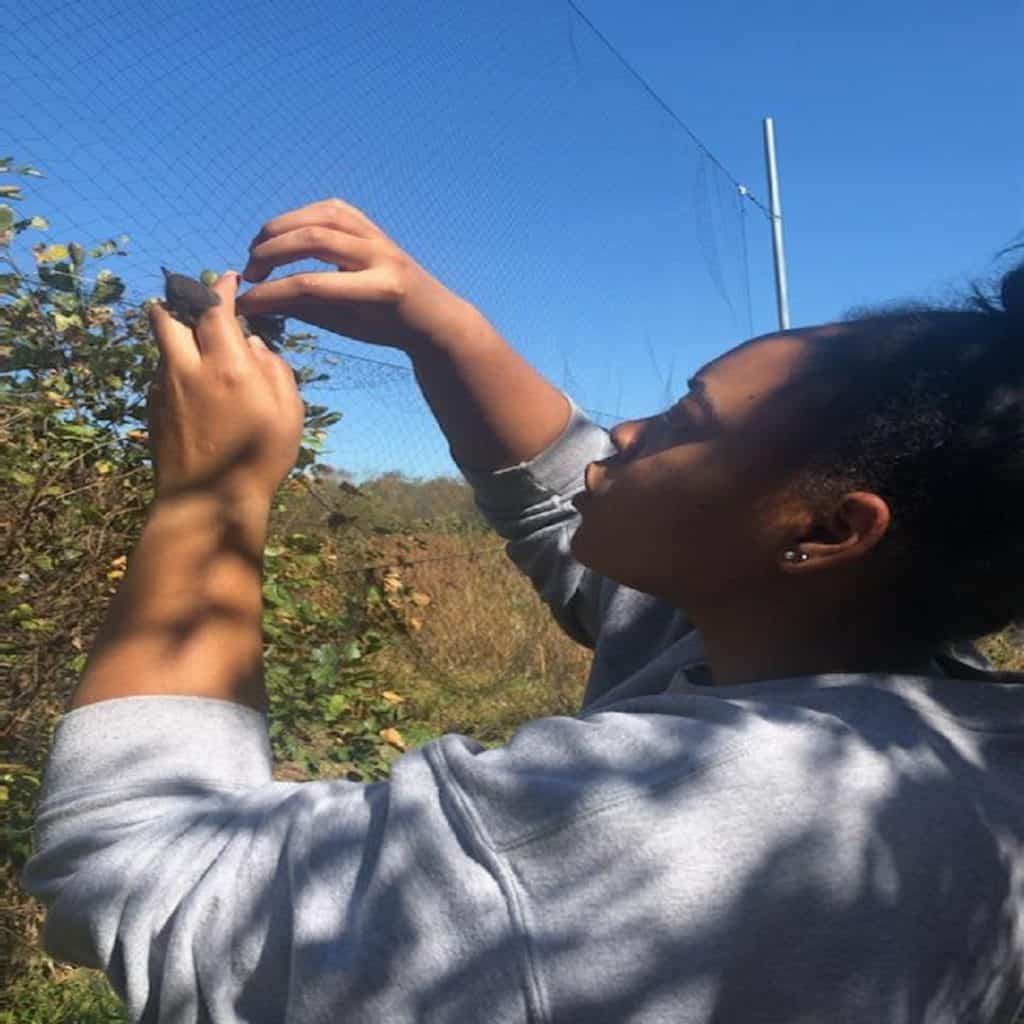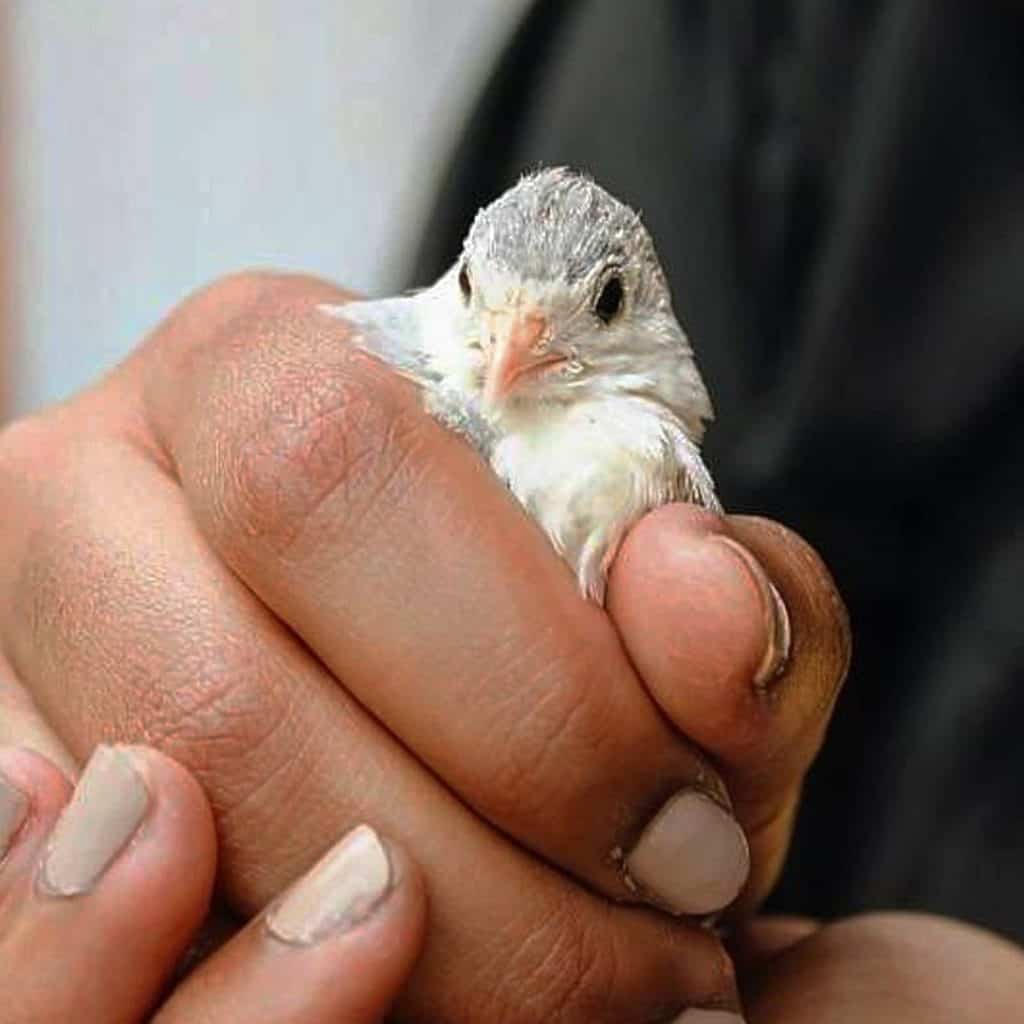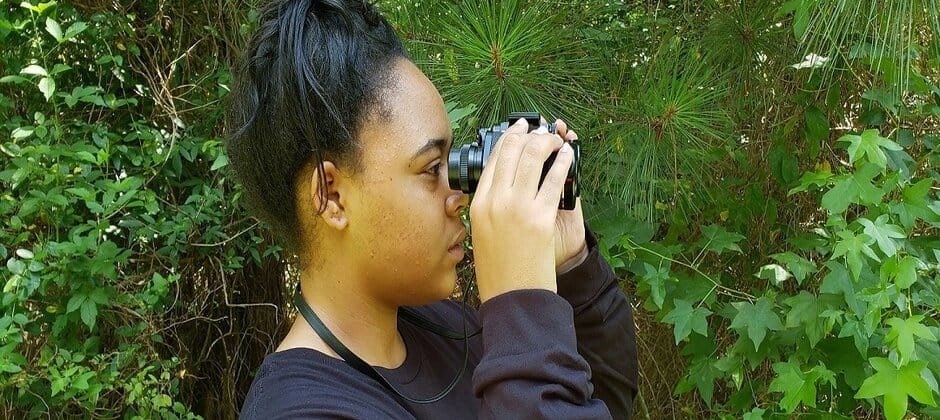Share this article
Wildlife Vocalizations: Lauren Pharr
Wildlife Vocalizations is a collection of short personal perspectives from people in the field of wildlife sciences.
Ever since I was young, I grew up wanting to become a veterinarian, because I was a huge animal lover and I was never exposed to any other career working with animals. It wasn’t until I worked at an animal hospital for three years and completed a summer internship that I realized becoming a veterinarian may not be the path for me.
I became stuck. I had no idea what I wanted to do now because my only opportunity to work with animals was gone—or so I thought. I went off to college and decided to pursue pharmacy. I struggled during my first two years of undergraduate studies. I was miserable. It wasn’t until the end of my sophomore year that my journey changed. After traveling out to Dubois, Idaho to study sheep, I was hooked.

Pharr extracts a female ruby-crowned kinglet (Regulus calendula) from a mist net at Powdermill Nature Reserve in Rector, Pa. on Oct. 11, 2019. This was a part of Pharr’s initial training to practice and learn about bird banding and mist netting. Credit: Murry Burgess
I dropped my pharmacy track and changed my major to environmental biology. I began taking courses in environmental science, animal ecology and wildlife biology. This was when I discovered that I wanted to pursue a career in wildlife biology. I began learning all about different career paths working with wildlife and exotic animals, but it wasn’t until I began conducting research my junior year with Chinese blue-breasted quail (Coturnix chinensis) that I decided I wanted to study birds. I studied the vocal harmonics of these quail and whether or not different variables of their calls changed over time as they physically matured. This research gave me the opportunity to travel to scientific conferences to present my work. I even earned my school’s undergraduate research award in pure and applied sciences. This was when I knew that I had found my calling.

Pharr holds a female Chinese blue-breasted quail (Excalfactoria chinensis) at Wingate University in Wingate, N.C on April 17, 2019. Pharr hand-raised this quail as a part of her undergraduate research studying their vocal harmonics. Credit: Taylor Powell
In 2019, I graduated with my bachelor’s degree in environmental biology from Wingate University. I wanted to continue to conduct research and study birds, so in fall of 2019, I applied and was accepted into North Carolina State University’s master’s program in fisheries, wildlife and conservation biology. In my current research, I’m studying urban noise and light pollution and its potential effects on adult avian survivorship among seven different focal species (northern cardinal (Cardinalis cardinalis), American robin (Turdus migratorius), gray catbird (Dumetella carolinensis), song sparrow (Melospiza melodia), Carolina wren (Thryothorus ludovicianus), house wren (Troglodytes aedon) and Carolina chickadee (Poecile carolinensis)) by using GIS Mapping, Program R and preliminary data from the citizen science project Neighborhood Nestwatch.
Upon completing masters, I plan to pursue my Ph.D. in fisheries, wildlife and conservation biology and continue to research birds. My ultimate goal is to obtain a permanent position with a federal or state agency, specifically the United States Fish and Wildlife Service or the North Carolina Wildlife Resource Commission.
As I reflect and look back on my journey, I am so glad I went through what I did because I would have never found my true passion if I hadn’t. For that, I truly thank the birds.
Learn more about Wildlife Vocalizations, and read other contributions.
Submit your story for Wildlife Vocalizations or share the submission form with your peers and colleagues to encourage them to share their story.
For questions, please contact Jamila Blake.
Header Image: Pharr birds in Raleigh, N.C. on July 3, 2020. Credit: Lauren Pharr








